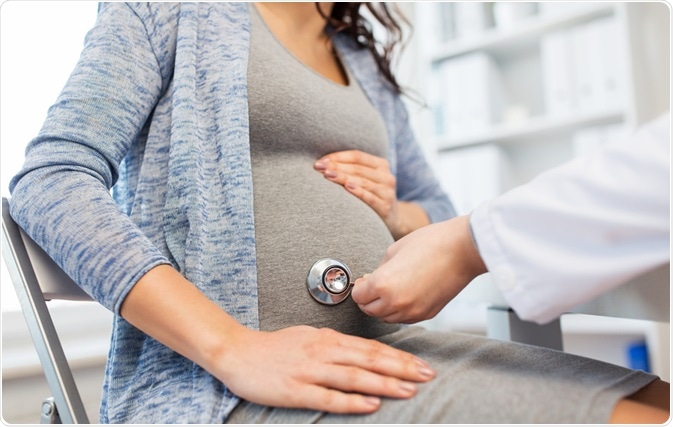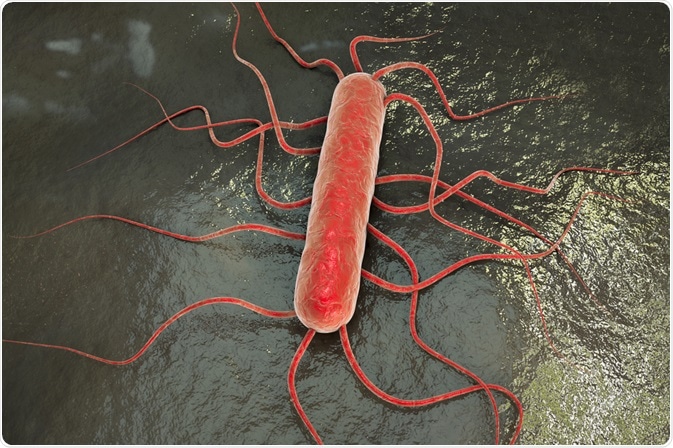Pregnancy can be a sensitive time for both the mother and fetus, with special considerations needed to ensure their health. Several environmental hazards should be avoided during pregnancy, such as chemicals and parasites, that might otherwise be manageable to consume.

Image Credit: Syda Productions/Shutterstock.com
Types of hazards
While environmental exposure is how many diseases and conditions are acquired, developing fetuses are particularly vulnerable to these. The effects of environmental hazards on pregnancy can be severe and include disruptions in fetal growth, congenital anomalies, stillbirth, and pregnancy loss. Furthermore, environmental hazards early in pregnancy can disrupt the development of the fetal immune system.
Many of the substances encountered in people’s day to day life can be hazardous for a fetus to be exposed to. For example, certain household cleaners with powerful smells and paint can be toxic and dangerous. Other types of chemical hazards include toxic substances like mercury and dry-cleaning fluids. These types of chemicals can be persistent, with some findings of pesticides that have been banned for more than 30 years still found in umbilical cords.
There are also certain environmental hazards in pregnancy that come from the lifestyle of the mother and the people around them. For example, smoke or secondhand smoke from cigarettes can be damaging. Similarly, physical exercise that is too strenuous, such as heavy lifting or standing for extended periods, can be dangerous. Furthermore, certain childhood viruses commonly encountered by teachers and health care workers can be dangerous.
A less well-known environmental hazard is exposure to high temperatures, such as those encountered in hot tubs and saunas. These can lead to defects in the neural tubes of the fetus if temperatures exceed 100˚ F (around 38˚ C) for extended periods.
Certain medical procedures can also confer a hazard in pregnancy. X-ray machines or other nuclear medical procedures that contain ionizing radiation can be damaging to a fetus. Furthermore, gases with anesthetic properties that are used in some medical and dental procedures can potentially be dangerous to the fetus.
Microbial infections can be especially dangerous during pregnancy. Some of the most dangerous ones are listeriosis (from Listeria bacteria) and toxoplasmosis. To avoid these, it is recommended that pregnant people avoid raw fish or meat, unpasteurized milk, cat litter boxes, and soil.
Microbial hazards
Listeriosis is a bacterial disease that can be obtained from eating raw or undercooked fish and meat, some soft cheese, and certain prepared meat products such as sausages. While it is very rare, the consequences can be serious and include miscarriage.
Listeriosis can be relatively easily avoided by making certain lifestyle changes, such as cooking and heating all meals thoroughly, avoiding unpasteurized dairy products, washing raw fruits and vegetables, and thoroughly washing hands, knives, and cutting boards after using them on raw foods. Mercury can also be found in fish, which is another reason pregnant people should avoid it.
Toxoplasmosis is a parasite that occurs relatively commonly but can have serious effects on fetal development. In most people, a toxoplasmosis infection presents as mild flu. Because of this, many people carry antibodies against toxoplasmosis already. However, toxoplasmosis can be spread to naïve hosts through cat feces or via raw or undercooked meat.
Most cat owners have already had toxoplasmosis at some point. Other people can avoid contracting it by not interacting with cat litter boxes, wearing masks and gloves when gardening or working with soil which might be contaminated, thoroughly cooking food for both yourself and your cat, avoiding unpasteurized dairy, and thoroughly cleaning hands and utensils that have been in contact with raw food.

Image Credit: Kateryna Kon/Shutterstock.com
Danger and severity
There is some conflicting evidence on how severe the effects of certain environmental hazards are on fetus health. Most studies have focused on the effects of tobacco smoke on fetuses, and meta-analyses of this have found that there are significant associations between tobacco smoke and stillbirths and congenital anomalies. This includes environmental or secondhand tobacco smoke.
Other environmental hazards that are harder to avoid include outdoor pollution. Some studies have found that PM2.5, a common particulate matter used in studies on pollution, could be associated with some congenital anomalies. Similarly, disinfection by-products found in the water was associated with stillbirth.
Indoor air pollution, from solid fuel use, was associated with stillbirth. However, meta-analyses that show associations between stillbirths and an environmental hazard are limited by the rarity of stillbirth events, which might skew significance estimates.
Sources
- Childbirthconnection.org. 2020. Environmental Hazards and Toxins. [online] Available at: <http://www.childbirthconnection.org/planning-pregnancy/environmental-hazards-toxins/> [Accessed 25 August 2020].
- Nieuwenhuijsen, M., Dadvand, P., Grellier, J., Martinez, D., and Vrijheid, M., 2013. Environmental risk factors of pregnancy outcomes: a summary of recent meta-analyses of epidemiological studies. Environmental Health, 12(1).
- Ondeck, M., and Focareta, J., 2009. Environmental Hazards Education for Childbirth Educators. Journal of Perinatal Education, 18(4), pp. 31-40.
Further Reading